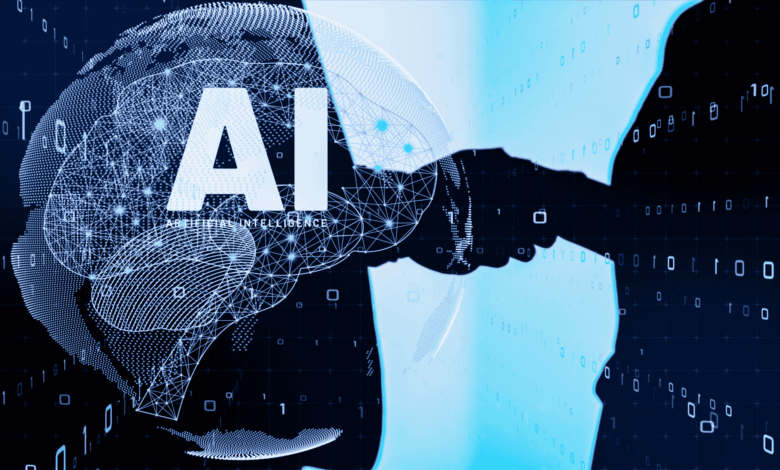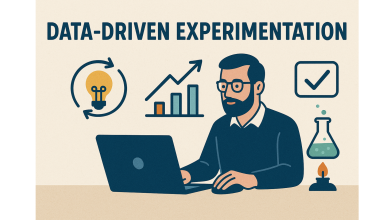
Now, with the rise of AI, personal data is more valuable for companies than it has ever been before. Our data has become so valuable, that it’s often referred to as “the new oil” because without it, advertising and AI wouldn’t be possible.
This trend has caused companies to use AI to collect and process an ever-increasing volume of user data. While this is beneficial for the companies involved, how they collect, process, and misuse user data causes ethical issues.
Four ways companies collect user data
For a long time, companies have used cookies, app tracking, and fingerprinting to track user behavior, but with the development of AI, data collection has become faster, more intrusive, and more advanced.
1. Web tracking: cookies and pixels
Cookies: When a user browses the web or visits a website, cookies are used to track and collect what is clicked on, what is searched for, the websites visited, and purchases made.
Tracking Pixels: Tracking pixels embedded in websites and emails collect data to understand user engagement.
This data is collected to build a detailed user profile, from which companies can better predict behaviors and preferences. With this data, companies can create advertisements perfectly targeted at the user.
2. Data from social media
Social media content: A user’s posts, comments, likes, and engagement on social platforms like Facebook, Instagram, and LinkedIn get collected. What is more, AI tools are used to scan the engagement patterns of users to create personalized feeds based on different algorithms and to create targeted advertisements.
AI sentiment analysis: Through AI sentiment, analysis of social posts, AI can interpret opinions, emotions, and trends. With this data companies, can get a better understanding of how users feel about brands, topics, and products.
Facial Recognition: In some cases, companies use facial recognition to collect data. AI analyzes user photos and videos from which it can gather data on emotions, behaviors, and trends.
3. Location and GPS data
Location-Based Tracking: Apps track user locations to send personalized offers based on user locations.
Commute and Navigation Data: AI is used to analyze user travel patterns. Through this, companies get an idea of a user’s commute to work, where they live, or go to the gym. This data is used for targeted advertising.
4. Shopping behavior and purchase tracking
Shopping behavior: Companies use AI to track what users view, and the products they add or remove from their shopping carts.
Purchase tracking and Payment data: User data from past purchases and payment data is collected to better predict future purchases and better recommend products.
Process and analysis through data mining
Companies collect vast amounts of user data and then use AI and algorithms to analyze this data through data mining techniques.
Predictive analytics and advertising
- AI analyzes vast amounts of personal data and behavioral data to predict what users are interested in. With this data, companies create targeted ads directed at specific audiences.
- AI is also used for dynamic pricing: AI can adjust the prices of products based on user behavior, demand, and competition.
Pattern recognition and segmentation
AI is able to group users according to their demographics, shopping habits, and interests. For example, a company like Amazon will segment its users into buying personas and use this to target them with personalized recommendations.
Third-party sharing and data aggregation
With so much data online, users are also tracked across platforms. AI is then able to use the data from all the platforms to create extremely detailed profiles of users which is also used for advertising. Companies also have vast third-party sharing agreements, meaning they sell user data to advertisers, research firms, and for AI purposes.
For example, companies like Meta and Google, collect vast amounts of user data and use this for AI purposes. They also sell data to third parties like advertisers.
Ethical concerns: data collection and misuse
Through extensive data collection, AI tools and algorithms can now build very accurate profiles of users. Companies are able to know a lot more about who the user is, their behaviors, habits, preferences, and even political views.
While companies use this data for advertising, to create personalized experiences online, and to drive profits, ethical concerns arise when this data is misused by those in power.
Political organizations and groups can use the data collected for targeted political advertising where they target specific groups more likely to be easily influenced by agenda-driven news, ads, and information. This might not only misinform the user but also manipulate them.
A perfect example of how targeted political advertising has played out in the past is the Cambridge Analytica Scandal where millions of Facebook users’ data was harvested without their consent or knowledge and used for political advertising. This highlights unethical data collection by companies, and unethical use of user data – for political benefit.
Knowing so much about a user allows those with power to push agendas through targeted advertising and politically driven content. Users who are profiled as vulnerable and marked as easy targets are even more at risk of experiencing the negative consequences of data collection.
Data collection in the age of AI: complex and dynamic
With the introduction of AI, data collection and analysis is complex and dynamic. While AI has the power to improve data collection practices for companies, it must be done by adhering to strict guidelines that better protect users.




